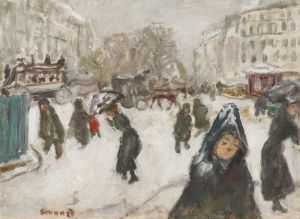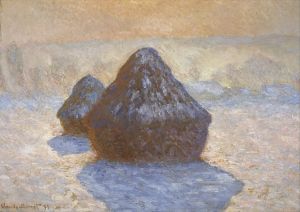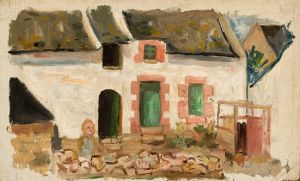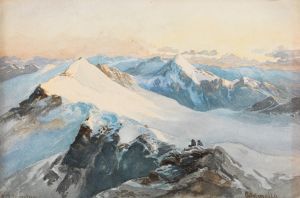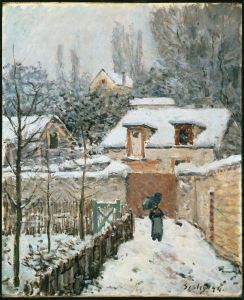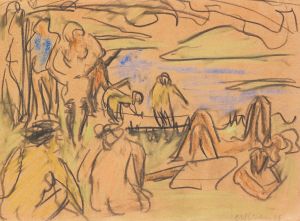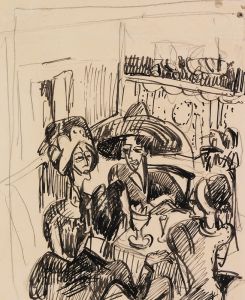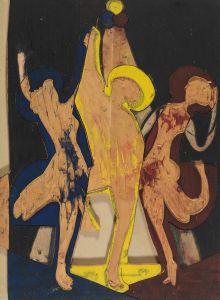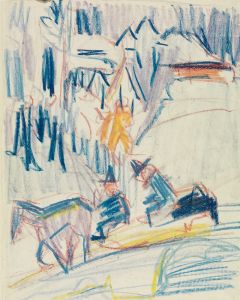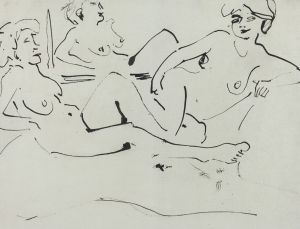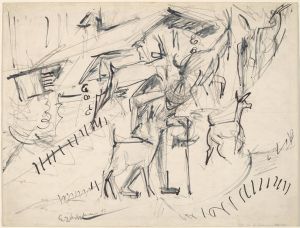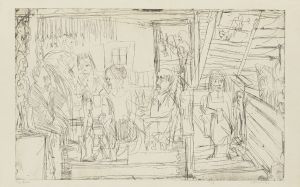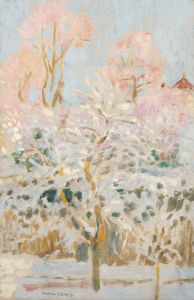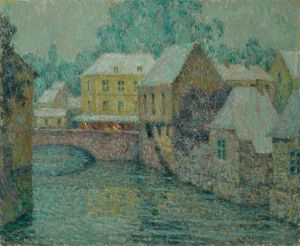
Häuschen unter Bäumen im Schnee
A hand-painted replica of Ernst Ludwig Kirchner’s masterpiece Häuschen unter Bäumen im Schnee, meticulously crafted by professional artists to capture the true essence of the original. Each piece is created with museum-quality canvas and rare mineral pigments, carefully painted by experienced artists with delicate brushstrokes and rich, layered colors to perfectly recreate the texture of the original artwork. Unlike machine-printed reproductions, this hand-painted version brings the painting to life, infused with the artist’s emotions and skill in every stroke. Whether for personal collection or home decoration, it instantly elevates the artistic atmosphere of any space.
Ernst Ludwig Kirchner was a prominent German expressionist painter and one of the founding members of the influential art group Die Brücke (The Bridge), which played a crucial role in the development of modern art in the early 20th century. Kirchner's work is characterized by its bold use of color, dynamic compositions, and a focus on capturing the emotional and psychological aspects of his subjects.
"Häuschen unter Bäumen im Schnee" (House under Trees in the Snow) is one of Kirchner's paintings that exemplifies his unique style and thematic interests. Painted during a period when Kirchner was deeply influenced by the landscapes and rural settings of Switzerland, this work reflects his fascination with nature and his ability to convey the serene yet powerful presence of the natural world.
The painting depicts a small house nestled among trees, blanketed by snow. Kirchner's use of vibrant colors and expressive brushstrokes brings the scene to life, capturing the quiet beauty and isolation of the winter landscape. The composition is both simple and striking, with the house serving as a focal point amidst the surrounding trees and snow-covered ground.
Kirchner's time in Switzerland, particularly in the Davos region, was a period of significant artistic development. After moving there in 1917, partly to recover from the psychological trauma he experienced during World War I, Kirchner found solace and inspiration in the Swiss Alps. The tranquility and majesty of the mountains and forests became a recurring theme in his work, as he sought to express his personal connection to the natural environment.
In "Häuschen unter Bäumen im Schnee," Kirchner's use of color is particularly noteworthy. The contrast between the cool blues and whites of the snow and the warm tones of the house and trees creates a harmonious yet dynamic visual effect. This interplay of colors is a hallmark of Kirchner's expressionist style, which often sought to evoke emotional responses through bold and unconventional color choices.
The painting also reflects Kirchner's interest in the interplay between man-made structures and the natural world. The small house, dwarfed by the towering trees and expansive snow, suggests a sense of vulnerability and harmony with nature. This theme of human existence within the larger context of the natural environment is a recurring motif in Kirchner's work, highlighting his philosophical and aesthetic concerns.
Kirchner's contributions to the expressionist movement and his innovative approach to color and form have left a lasting impact on the art world. His works, including "Häuschen unter Bäumen im Schnee," continue to be celebrated for their emotional depth and artistic vision. Today, Kirchner's paintings are held in high regard and are featured in major art collections and exhibitions worldwide, reflecting his enduring influence on modern art.
In summary, "Häuschen unter Bäumen im Schnee" is a testament to Ernst Ludwig Kirchner's mastery of expressionist techniques and his deep connection to the natural world. Through his use of color, composition, and subject matter, Kirchner captures the serene beauty and emotional resonance of a winter landscape, offering viewers a glimpse into his artistic vision and the world he inhabited.





